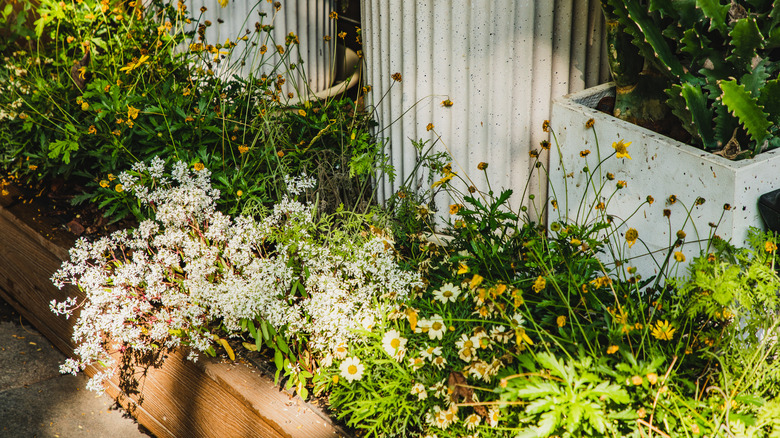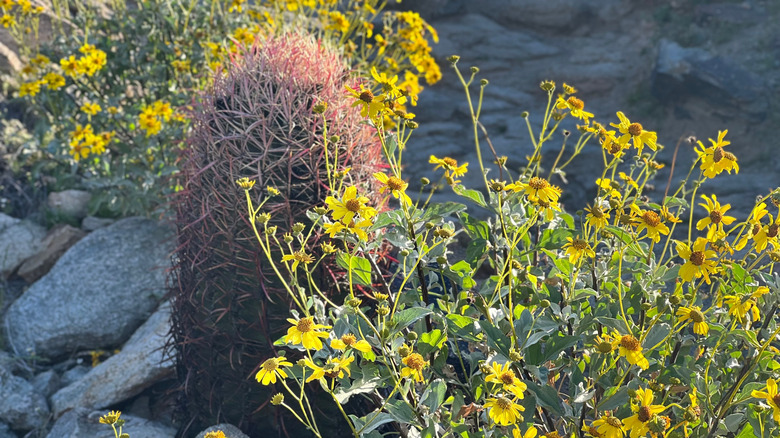The Nectar-Rich Flower You Should Add To Your Garden To Support Birds & Pollinators
Creating the perfect pollinator-friendly paradise in your garden is all about choosing the right plants that fit your local climate. This can be an especially tricky task in hot, dry regions where traditional flowering greenery may struggle with inconsistent watering. That's where drought-tolerant plants come in, packing a surprising amount of color and ecological value to your garden — and bringing a number of pollinators with them. Native species to your region are especially beneficial for this task, as they are well adapted to local conditions and provide a reliable source of food for animals in the area. When it comes to building a vibrant, water-conscious pollinator garden, choosing the right native bloom can make a world of difference.
One low-maintenance wildflower that seems to stand out as a top choice is the desert marigold (Baileya multiradiata). Native to the American southwest and northern Mexico, these vibrant yellow flowers are the perfect addition to any low-maintenance garden. The flowers of the desert marigold produce a nectar that draws in bees, butterflies, and insects across an extensive blooming period — stretching from March to November. As one of the native plants that can attract various birds to your yard, the desert marigold isn't just beneficial when your flowers are in bloom. Instead, the seeds of the plant provide a necessary food source for local wildlife, including a number of bird species and small creatures. It's a pollinator favorite that requires little in return, reseeding itself each year to brighten your landscape. If you want a no-fuss flower that sustains your local ecosystem even in arid conditions, look no further than the desert marigold.
Caring for desert marigolds
Growing marigolds is easy if you avoid some common mistakes, and this variety is no different. When it comes to watering, desert marigolds don't require much to keep themselves going. Infrequent watering can assist in larger flowers, and you want to be careful not to drown your plant in the process of watering them. Once the wildflower is fully established in its new home, it can rely on natural rainfall in most climates, making them a low-effort staple for gardenscapes in dry, desert regions. These drought-tolerant perennials are built to withstand harsh conditions, preferring a well-draining, sandy or rocky soil. They aren't too particular about the type of soil that they are planted in, as long as it doesn't retain excess moisture. Additionally, the plants tend to enjoy access to direct, full sunlight. Desert marigolds don't require rich nutrients to thrive, so you can skip out on fertilizers altogether or apply it only once in early spring to encourage new growth.
To keep the plant flowering, you'll want to deadhead older growths throughout the season. This will promote new growth on the plant and prevent it from spending too much energy on seed production. With that in mind, it may be beneficial to leave a few spent flowers on your plant at the end of the season, as the birds will feed on the seeds. Most mammals will avoid eating your wildflowers, unless food sources are particularly scarce in the region, meaning they are a safe and reliable food source for a number of pollinators.

